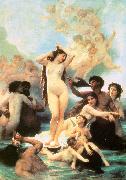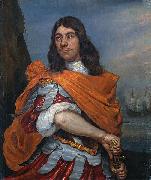|
|
|
|
|
Oil On
Canvas, Real Flavor of Old Masters
|
|

|
ARTWORKS
INDEX
A B C D E F G H I J K L M N O P Q R S T U V W X Y Z |
ARTISTS
INDEX
A B C D E F G H I J K L M N O P Q R S T U V W X Y Z |
|
|
| | |
|
|
|
|
 |
Aelst, Willem van -- Click Here
|
|
Dutch Baroque Era Painter, 1627-ca.1683 Studied under Otto Marseus van Schrieck. Students included Rachel Ruysch. Specializes in Still Life. was a Dutch artist who specialized in still-life painting with flowers or game. Van Aelst was born to a family of prominent city magistrates. He learned to paint from his uncle, the still-life painter Evert van Aelst. On 9 November 1643 he enrolled as a master of the Guild of Saint Luke at Delft. Between 1645 and 1649 he lived in France. In 1649 Van Aelst travelled to Florence, where he served as court painter to Ferdinand II de Medici, grand duke of Tuscany. At this time, the grand duke also employed two fellow Dutchmen Matthias Withoos and Otto Marseus van Schrieck, the latter also a still-life painter who probably influenced Van Aelst's style. In 1656 he returned to the Netherlands to settle permanently in Amsterdam. He became one of the most prominent still-life painters of his generation, |
|
 |
Adriaen van der werff -- Click Here
|
|
Dutch Baroque Era Painter, 1659-1722
Dutch painter and draughtsman. He was apprenticed to the portrait painter Cornelis Picolet (1626-79) from 1668 to 1670 and then from c.1671 to 1676 to Eglon van der Neer in Rotterdam. From 1676 van der Werff produced small portraits and genre paintings as an independent master; the Cook and Hunter at a Window (1678; New York, priv. col.; see Gaethgens, no. 2) and Man and Woman Seated at a Table (1678; St Petersburg, Hermitage) perpetuate the thematic and stylistic traditions of Gerrit Dou, Gabriel Metsu, Frans van Mieris and Gerard ter Borch (ii) but are distinguished by their greater elegance and richness of costume and interior. Van der Werff's portraits date mainly from the years 1680-95 (e.g. Two Children with a Guinea-pig and a Kitten (1681; London, Buckingham Pal., Royal Col.)). The motif of children with animals recalls van der Neer, while the careful depiction of fabrics recalls the Leiden school of 'Fine' painters. His Portrait of a Man in a Quilted Gown (1685; London, N.G.) resembles compositions by Caspar Netscher and Nicolaes Maes: a figure leaning against a balustrade, before a landscape. Van der Werff's work is, however, more elegant, in part because of the depiction of fabrics |
|
 |
Adolphe William Bouguereau -- Click Here
|
|
Bouguereau made more than seven hundred finished works. French painter. From 1838 to 1841 he took drawing lessons from Louis Sage, a pupil of Ingres, while attending the coll?ge at Pons. In 1841 the family moved to Bordeaux where in 1842 his father allowed him to attend the Ecole Municipale de Dessin et de Peinture part-time, under Jean-Paul Alaux. In 1844 he won the first prize for figure painting, which confirmed his desire to become a painter. As there were insufficient family funds to send him straight to Paris he painted portraits of the local gentry from 1845 to 1846 to earn money. In 1846 he enrolled at the Ecole des Beaux-Arts, Paris, in the studio of Francois-Edouard Picot. This was the beginning of the standard academic training of which he became so ardent a defender later in life. Such early works as Equality reveal the technical proficiency he had attained even while still training. In 1850 he was awarded one of the two Premier Grand Prix de Rome for Zenobia Discovered by Shepherds on the Bank of the River Araxes (1850; Paris, Ecole N. Sup. B.-A.). In December 1850 he left for Rome where he remained at the Villa Medici until 1854, working under Victor Schnetz and Jean Alaux (1786-1864). During this period he made an extensive study of Giotto's work at Assisi and Padua and was also impressed by the works of other Renaissance masters and by Classical art. On his return to France he exhibited the Triumph of the Martyr (1853; Luneville, Mus. Luneville; ) at the Salon of 1854. It depicted St Cecilia's body being carried to the catacombs, and its high finish, restrained colour and classical poses were to be constant features of his painting thereafter. All his works were executed in several stages involving an initial oil sketch followed by numerous pencil drawings taken from life. Though he generally restricted himself to classical, religious and genre subjects, he was commissioned by the state to paint Napoleon III Visiting the Flood Victims of Tarascon in 1856 |
|
 |
Adolf-Ulrik Wertmuller -- Click Here
|
|
Swedish Painter, 1751-1811,was a Swedish painter whose notable works include Danaë receiving Jupiter in a Shower of Gold. Wertmuller was born in Stockholm and studied art at home before moving to Paris in 1772 to study under his cousin Alexander Roslin and French painter Joseph-Marie Vien. On July 30, 1784, Wertmuller was elected to the Royal Academy of Painting and Sculpture. Wertmuller was commissioned by Gustav III of Sweden for a portrait of Marie Antoinette, which is now in the Nationalmuseum at Stockholm. In 1787, he produced his masterpiece Danae, a work which proved controversial as one of the earliest female nude paintings exhibited in America. Wertmuller first emigrated to the United States in May 1794 and continued his portrait work, most notably of General Washington, but in 1796 was called back to Sweden, eventually returning to Philadelphia in 1800. Wertmuller was married to Elizabeth Henderson, granddaughter of noted early American painter Gustavus Hesselius, on January 8, 1801, and two years later retired to a plantation in Claymont, Delaware, where he lived the final years of his life. |
|
 |
Adolf Ulrik Wertmuller -- Click Here
|
|
(February 18, 1751 e October 5, 1811) was a Swedish painter whose notable works include Danaë receiving Jupiter in a Shower of Gold.
Wertmeller was born in Stockholm and studied art at home before moving to Paris in 1772 to study under his cousin Alexander Roslin and French painter Joseph-Marie Vien. On July 30, 1784, Wertmeller was elected to the Royal Academy of Painting and Sculpture.
Wertmeller was commissioned by Gustav III of Sweden for a portrait of Marie Antoinette, which is now in the Nationalmuseum at Stockholm. In 1787, he produced his masterpiece Danaë, a work which proved controversial as one of the earliest female nude paintings exhibited in America.
Wertmeller first emigrated to the United States in May 1794 and continued his portrait work, most notably of General George Washington, but in 1796 was called back to Sweden, eventually returning to Philadelphia in 1800. Elizabeth B. Johnston, in her book Original Portraits of Washington (Boston, 1882), speaks of five portraits of Washington by Wertmeller, of which one, executed in 1797, was purchased by the U. S. government in 1878, and another is owned by the Historical Society of Pennsylvania.
Wertmeller was married to Elizabeth Henderson, granddaughter of noted early American painter Gustavus Hesselius, on January 8, 1801, and two years later retired to a plantation in Claymont, Delaware, where he lived the final years of his life. He died near Marcus Hook, Pennsylvania, aged 60.
|
|
 |
Adam Willaerts -- Click Here
|
|
(July 21, 1577, London - April 4, 1664, Utrecht ) was a Dutch Golden Age painter.
Willaerts (occasionally Willarts, Willers) was born in London to Flemish parents who had fled from Antwerp for religious reasons. By 1585 the family lived in Leiden. From 1597 until his death, Adam lived in Utrecht, where he became a member of the Guild of St. Luke in 1611, and subsequently rose to dean in 1620. His sons Cornelis, Abraham, and Isaac followed in his footsteps.
He was known as a painter of river and canal pieces, coastal landscapes, fish-markets, processions, and genre scenes. He also painted villages and marine battle scenes.
|
|
 |
Adalbert Waagen -- Click Here
|
|
painted Bucht von Palermo mit Blick auf Monte Pellegrino in 1896 |
|
 |
Abraham Wuchters -- Click Here
|
|
Abraham Wuchters (1608 - 23 May 1682) was a Dutch-Danish painter and engraver. He was born in Antwerp but had most of his career in Denmark where he, along with Karel van Mander III, was the preferred painter of the Danish King, nobility and Bourgeoisie during his day, together they represent the main influence from the Dutch Golden Age on Danish Baroque art.
Wuchters was born in Antwerp in 1608. He arrived in Denmark in 1638 and was, the following year, employed as sketching master at Sorø Academy. Around the same time, he was summoned to Copenhagen where he painted several portraits of King Christian IV. In 1645 he returned to Copenhagen Castle to portray the King's children, including lrik Christian Gyldenløve (c. 1645, Danish National Gallery) and Duke Frederik (III) (c. 1645, Amalienborg Palace).
In two periods, between 1658 and 1662, he worked at the Royal Swedish Court in Stockholm where he portrayed Queen Consort Christina (1660, Uppsala University and 1661, Stockholm Castle), Charles X Gustav and Hedvig Eleonora.
Back in Denmark, Wuchters was engaged by Frederick III, who had instituted Denmark as an absolute monarchy in 1660, with responsibility for the maintenance of his paintings.
n 1671 the new king, Christian V, appointed him as official Painter to the Danish Coirt and in 1873 he was also made official Engraver to the Danish Court. It was, therefore, he alone who decided how the face of the absolutist King was to be represented. |
|
 |
Abraham Evertsz. van Westerveld -- Click Here
|
|
painted Cornelis Tromp in Roman costume in 1650-1692 |
|
|
|
|
|
|
| | |
|
|
|
|